
It brightens the skin
If you want to get glowing skin naturally, reach for turmeric. The ancient spice holds a special place of honor in Indian weddings, specifically in the Haldi ceremony, which involves applying a turmeric paste on the bride and groom—because of the glow it leaves on the soon-to-be-married couple. “This is due to the powerful antioxidant and anti-inflammatory called curcumin that is in turmeric—these serious turmeric benefits brighten the skin, improve the skin’s complexion, and rejuvenate dull-looking skin,” explains Shadoh Punnapuzha, founder of the Ayurvedic-inspired and sustainable skincare line, Taila Skincare. Here are more spices to upgrade your beauty routine.
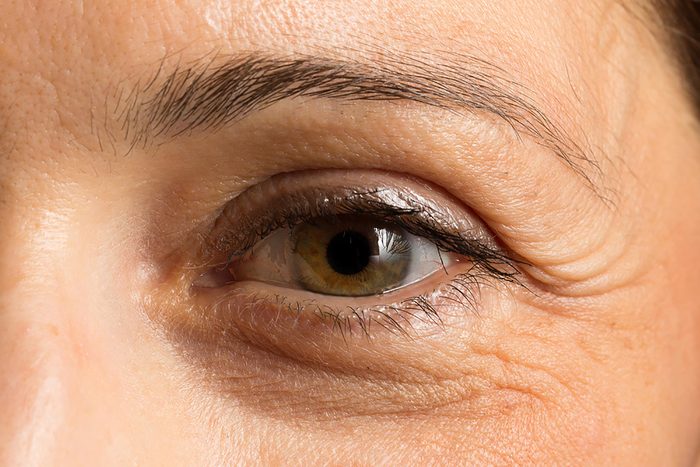
It may help reduce dark circles
If you’re prone to pesky, tired-looking bags under your eyes, you know how tricky it can be to find relief. While there are plenty of products on the market claiming to reduce the appearance of dark circles, one of the many topical turmeric benefits is that it can handle the task. “Since turmeric is a proven anti-inflammatory and lightening agent, it’s perfect for alleviating this kind of concern,” says Courtney Chiusano, founder of Courtney Chiusano Skincare in Los Angeles, California. “It also stimulates circulation, which can help reduce puffiness and under-eye darkness caused by poor circulation.” Here are problems that can pop up when you rub your eyes.

It may help whiten teeth
You wouldn’t think a spice that’s flaming yellow would be useful for something as tricky as teeth whitening, but prepare to be surprised! Though turmeric can stain fabrics, the spice has the power to naturally whiten teeth and relieve gingivitis and toothaches to boot. “You can use turmeric to make a natural, fluoride-free toothpaste that will ward off bacteria and ease inflammation,” says Medina Tshibemba, a natural skincare expert from Bare Alchemy. To DIY your own, she recommends combining a mixture of 4 tablespoons turmeric powder, 2 tablespoons baking soda and ½ tablespoon coconut oil. “Thoroughly mix these ingredients, brush your teeth for up to three minutes, spit it out, and rinse your mouth until the water runs clear,” she says.
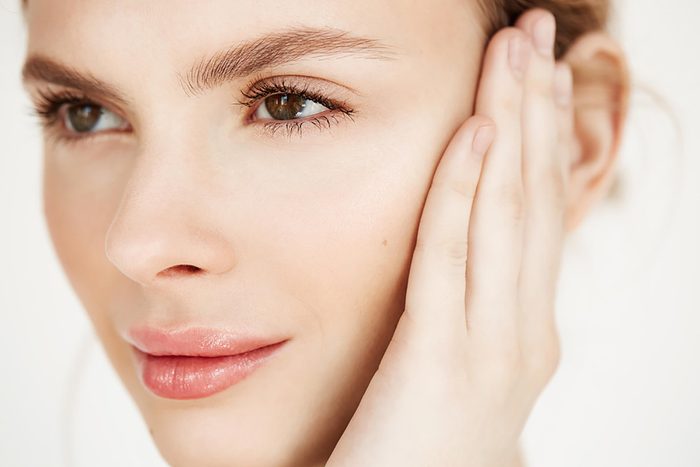
It may fight acne
“Turmeric benefits acne because not only is it a natural antiseptic to keep the bacteria from spreading, but it’s anti-inflammatory, which takes down the redness and swelling of the blemish,” explains Chiusano. It’s especially effective when combined with apple cider vinegar which has astringent properties, meaning it plays the same role as your average toner. “Turmeric also speeds healing, which can help with larger, open blemishes,” she says. To DIY your own spot treatment using turmeric, Chiusano recommends mixing equal parts turmeric and honey and applying a little on your blemishes for 20 minutes before rinsing with cool water. Here are more acne-fighting ingredients to add to your routine.
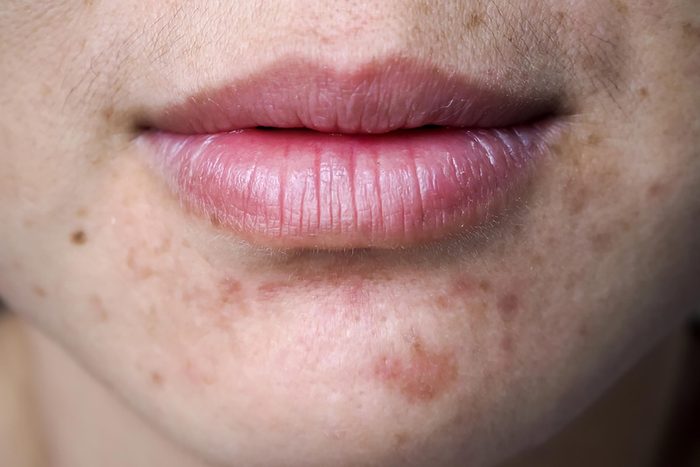
It may reduce the appearance of acne scars
The only thing worse than battling breakouts is living with the marks they leave behind. Thankfully, you don’t have to splurge for expensive products to minimize their appearance. Thanks to its anti-inflammatory capabilities, turmeric can help here too. “A remedy for hyperpigmentation and acne scars, turmeric is effective and natural without any side effects,” says Punnapuzha. “The curcumin it contains is a powerful anti-inflammatory and antioxidant that reduces excess production of melanin, which helps to even skin tone and lighten scars.” She recommends Vicco Turmeric Skin Cream. “They’ve been making their ever-popular turmeric cream since the 50s—it’s every Indian woman’s secret to beautiful skin.”
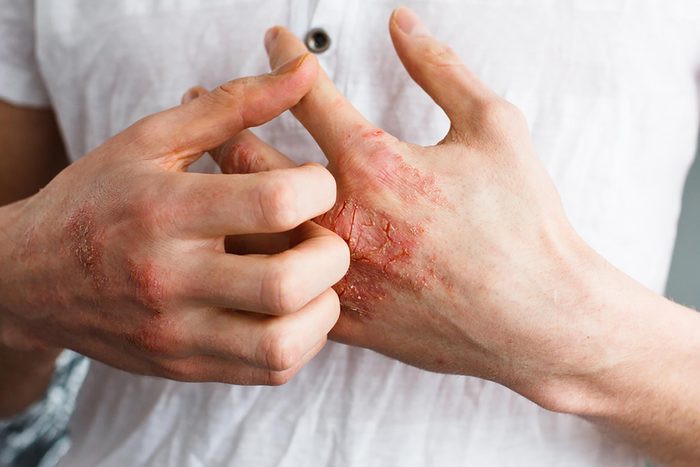
It may help treat skin conditions like eczema and psoriasis
Again, thanks to its anti-inflammatory and antibacterial benefits, turmeric can work wonders on condition-riddled skin. One small study, published in the peer-reviewed journal BioMed Research International, even found taking a turmeric supplement to be helpful in treating patients with psoriasis, one of the trickiest skin conditions to treat. “It can also help reduce redness from blemishes and calm skin conditions like eczema and rosacea,” notes Punnapuzha. A quick and easy preparation she suggests for alleviating these painful conditions is to mix equal parts turmeric and honey and apply it to inflamed or irritated skin to heal, calm, and cool skin. Don’t want the mess? Try Tata Harper’s Recovery Gel.
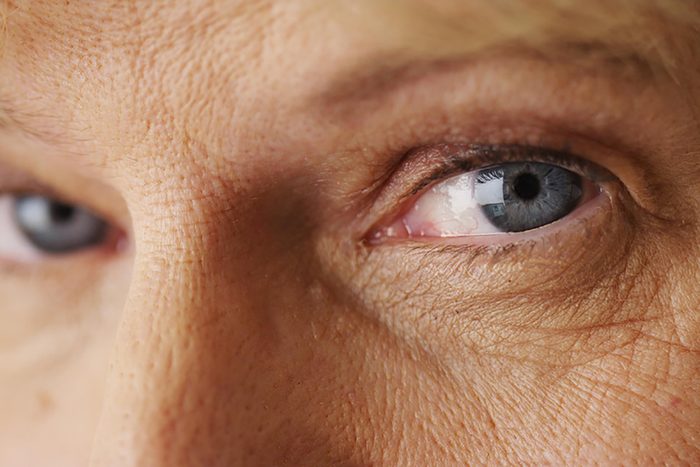
It may protect against sun damage and aging
Yep—who knew you had a secret anti-aging armor hiding in your cabinets. “[Turmeric] helps prevent loss of skin elasticity due to long-term UVB exposure,” adds Chiusano. She recommends applying turmeric topically or ingesting it internally to reap these benefits. “For a DIY recipe, mix ½ teaspoon with 1 tablespoon of honey. Apply it to the face, leave on for 10 minutes and rinse with warm water.” If DIY is not your thing, she recommends trying Juara Turmeric Antioxidant Radiance Mask. Learn about the things that increase your risk of sun damage.
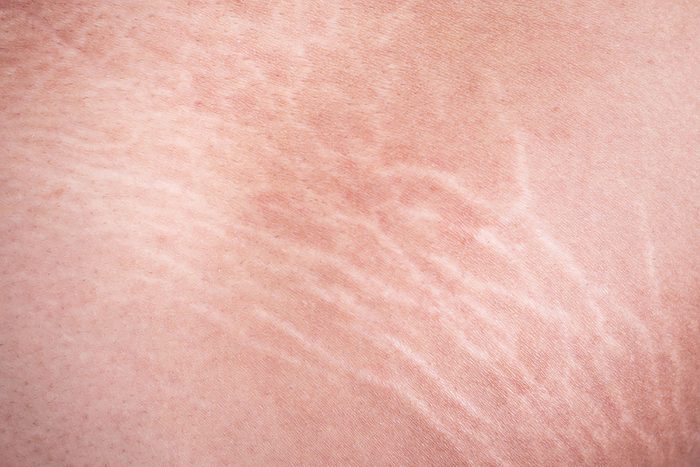
It may help reduce the appearance of stretch marks
Though they’re incredibly common, stretch marks are a friend to no one. These pesky little lines are hard to heal, but turmeric can help lighten their appearance. “Turmeric has the antioxidative power to penetrate and improve the function of the skin membrane cells, which will help prevent and treat stretch marks,” explains Tshibemba. She recommends making your own stretch mark-healing paste with 1 tablespoon of extra virgin olive oil, 1 teaspoon of turmeric and a squeeze of ⅛ of a lemon. Rub this mixture onto the affected areas twice a day. Here’s how dermatologists prevent and treat stretch marks.
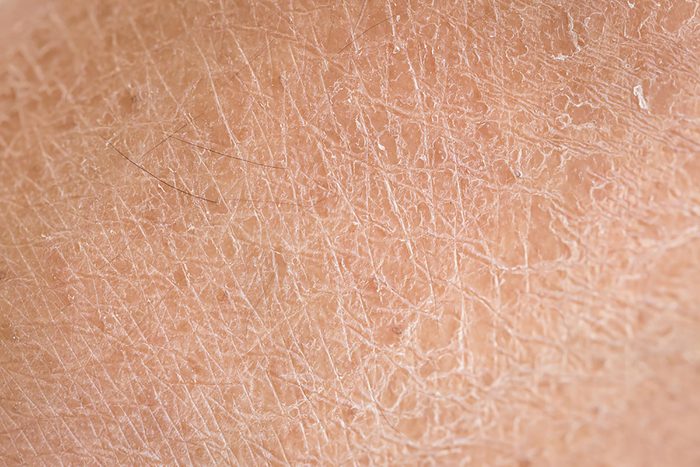
It moisturizes and revitalizes dry skin
“Turmeric can deeply hydrate and revitalize skin while alleviating symptoms of dryness,” says Punnapuzha. “It naturally speeds up the process of removing dead skin cells to reveal healthy and soft skin, and protects the skin cells from further damage.” She recommends using Pratima’s Revitalizing Turmeric Cream to give dry skin a boost. Also, if you increase your intake of turmeric in tea or add it to your food, it can help you reap more of the moisturizing benefits the spice has to offer. Here are other Indian spices you can use in everyday cooking.
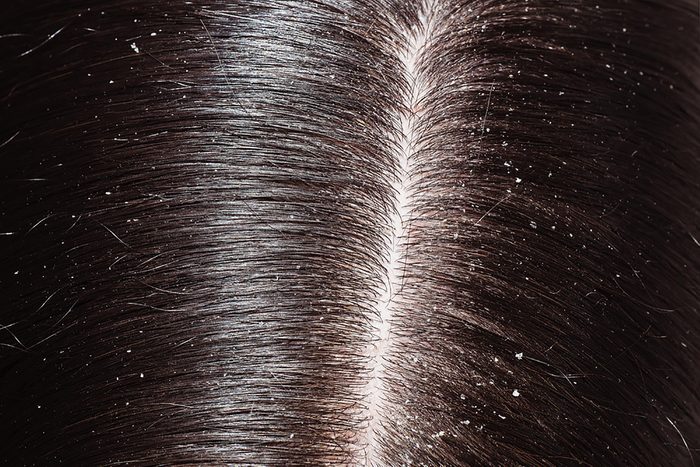
It may help treat dandruff
There are many possible reasons for a dry, itchy scalp, but often turmeric can come to the rescue. “The antiseptic and anti-inflammatory qualities that it contains can help soothe and rid dandruff,” Punnapuzha says. “Once a week, mix ½ teaspoon of organic turmeric powder with 4 tablespoons of organic coconut oil and leave on dry hair for about 30 minutes.” Follow with shampoo and simply wash out. Punnapuzha notes that it’s best on dark hair since turmeric can stain blonde or light-hued hair.
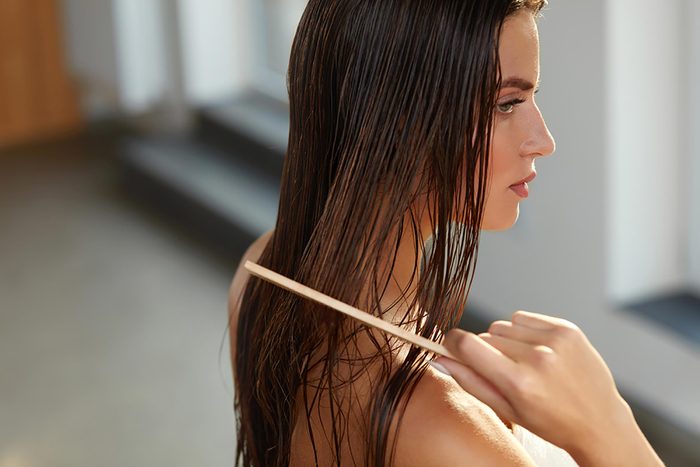
It may stimulate hair growth
Just as turmeric benefits skin repair, it can also help heal the issues you’re experiencing on your scalp. In fact, Tiffany Anderson, leading natural hair expert and certified trichologist, says that turmeric has the ability to prevent hair loss that comes from certain scalp infections and dandruff. “Your hair and scalp give you signs that let you know something is not right, the first of which is itching,” she says. “If you ignore the itching, the hair will begin to shed, and when you ignore the shedding the hair will begin to thin.” For a DIY scalp treatment, Chiusano recommends a mix containing equal parts turmeric and olive oil. “Leave it on for 15 minutes and then rinse,” she adds. “Follow up with a natural shampoo.” Learn more about the 10 most healing herbs and spices.

